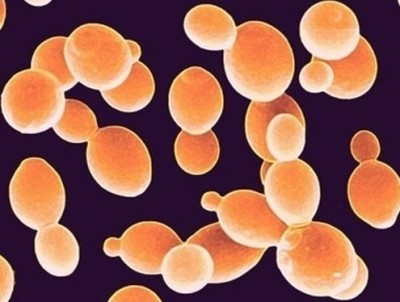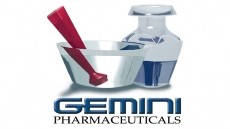Special edition: Multivitamins
Selenium, vitamin K2 and nicotinamide riboside ride new research toward roles beyond being multivitamin bit players

Multivitamins by their nature are similar to an orchestra. All players must cooperate in concert to put on a performance. But sometimes players might acquire new skills, making them suitable for being out front as a soloist.
Thus it is with at least three ingredients that have been featured in one form or another in multivitamin formulations: selenium, vitamin K2 and nicotinamide riboside, a form of vitamin B3 or niacin. In each case, new research has provided support for the use of these ingredients in formulations aimed at new indications.
And, if we might belabor the analogy a bit more, the new skills these soloists have acquired complicates keeping them seated in the ranks of the orchestra. Are they just too good to continue playing second fiddle?
Selenium’s first role as cancer fighter
Selenium is a good example with which to start. This ingredient has been researched for decades in the form of SelenoExcell, a form of selenium that is bound in a yeast that is produced by Madera,CA-based Cypress Systems. The company’s CEO, Paul Willis, said new research highlighting the importance of this form of the ingredient in supporting prenatal health and early childhood development—the so-called first 1,000 days of life—is opening new doors for this legacy mineral.
“Selenium first came on the scene as a result of the long-term nutritional prevention of cancer trial that began in about 1983. It showed no effect on skin cancer (the original endpoint) but did show reductions in colon, lung and prostate cancers,” Willis told NutraIngredients-USA.
“That study, which was unblinded in 1994 and published in 1996, really put selenium on the map,” Willis said. “Now almost every research trial on selenium will in its abstract start out talking about that trial, even though it was more than 25 years ago. It really was a landmark piece of research.”
The research supported ten FDA-approved qualified health claims on selenium and its ability to reduce the risk of certain cancers. Like many qualified claims, the officially approved language is either so watered down or frankly contradictory that it is of little marketing value. But even being allowed to say ‘cancer’ and ‘dietary supplement’ in the same breath is a big step.
Selenium becomes hero in ‘first 1,000 days’ story

But Willis said the research on this important trace mineral didn’t stop there. Cypress Systems recently put together an executive summary on the ingredient’s importance in this critical stage of life, a summary whose content Willis said was vetted by the company’s scientific advisory board. The weight of research referenced in the summary indicates that low selenium status can be broadly correlated with a higher incidence of preterm births.
This is a problem of critical public health importance, Willis said. As a group, preemie babies suffer a variety of expensive complications and may be impaired for life. Willis said he was surprised by how much research is already out there on this topic.
“When we put this summary together I was amazed at the depth of research. There are more than 225 researchers from around the world looking at this issue,” he said.
An independent search on the PubMed database maintained by the National Institutes of Health using the terms ‘selenium preterm’ brings up 91 studies. The first were done in the late 70s and early 80s and the pace is increasing, with six published in 2017 and three more already in 2018.
“In helping to prevent preterm births, in infant development, we think this is going to be a very strong, emerging area for selenium,” he said.
The reams of research supporting SelenoExcell’s expanded indications have not caused it to become too costly, Willis said. It equates to about half a penny per serving, he said. So putting it in a multivitamin formulation is more of marketing choice, rather than a cost-in-use calculation.
Clearing K2’s cost hurdle

For vitamin K2, the cost issue has been a hurdle, said Eric Anderson, head of global sales and new business development for Norwegian firm Nattopharma. The company supplies MenaQ7, a branded form of menaquinone 7, the most bioactive form of vitamin K2. This is a substance found in naturally fermented products like cheese and natto, a fermented soybean paste used in Asian cuisine, Anderson said.
“K2 is a ‘newer’ form of vitamin K,” he said. “For years commercially producing the vitamin through bacterial fermentation has been a bit problematical. But the cost in the past few years has come down by 80%.”
Vitamin K2, a menaquinone form, is differentiated from vitamin K, a phylloquinone form, by its different actions, Anderson said. Straight vitamin K is associated with blood clotting factors, whereas K2 is also important in calcium mobility into and out of the bones. This has opened doors in the areas of bone health as well as cardiovascular disease risk, Anderson said.
“The cost has come down the point where you now see K2 in a lot of bone health formulations, especially in the natural channel,” he said.
Riding herd on calcium
Newer research has helped support the use of K2 in an exciting new area—vascular health. The ingredient’s ability to regulate calcium transport has been studied as a mechanism of action in helping to prevent the stiffening of arterial walls and the development of arterial plaques.
“Vitamin K2’s benefits were first recognized in looking at places like Japan where they had been consuming a lot of natto. It was discovered that they had fewer fractures,” Anderson said.
“Then the Rotterdam study showed that in a healthy population of mature men and women the folks who consumed the most K2 had 50% less calcium in their arteries and 50% less risk of death from coronary heart disease,” he said.
Marketing a multivitamin ingredient for its ability to forestall hardening of the arteries could be a hard fit, Anderson admitted. An ‘arterial health’ positioning might be a bridge too far for a multivitamin product. And it’s complicated by the fact that the indication flies under the radar because few doctors discuss the condition with their patients, preferring to talk about CVD risk in terms of blood markers like cholesterol counts.
“The problem is that the traditional medical community doesn’t talk about hardening of the arteries because there is no drug treatment per se. Only vitamin K2 has shown activity with the proteins involved in arterial calcification,” he said.
New indications for nicotinamide riboside
Similarly nicotinamide riboside is expanding beyond its legacy boundaries. The ingredient, which is a form of vitamin B3 or niacin, is on the market branded as Niagen, manufactured by Irvine, CA-based ChromaDex.
Niacin, the base substance, is one of the oldest vitamin ingredients out there. Its chemical structure was first elucidated in the 1930s by Conrad Elvehjem, PhD, a biochemist at the University of Wisconsin. Elvehjem also first described the structure of nicotinamide.
Subsequent research into nicotinamide riboside has shown a variety of important effects all linked to Niagen’s role as an NAD+ precursor, said ChromaDex CEO Frank Jaksch. Like the newer research on vitamin K2, this opens pathways into expansive uplands where the multivitamin baggage train might find it difficult to follow.
Among the studies supporting the ingredient’s benefits is one showing its ability to ameliorate the effects of diabetes. Another, conducted as part of a research collaboration with NIH and the National Institute of Aging, has shown its neuroprotective properties. All of which points to a powerful anti aging positioning, Jaksch said.
We are pleased that our collaboration with NIH-NIA resulted in a significant peer reviewed publication in a prestigious journal,” Jaksch said. “This publication follows several other very recent publications with preclinical data demonstrating that NR, by raising NAD, has a significant impact on cognitive function.
“There are at least two human trials on mild cognitive impairment underway, and the additional data should pave the way for additional human clinical trials,” he added.
















